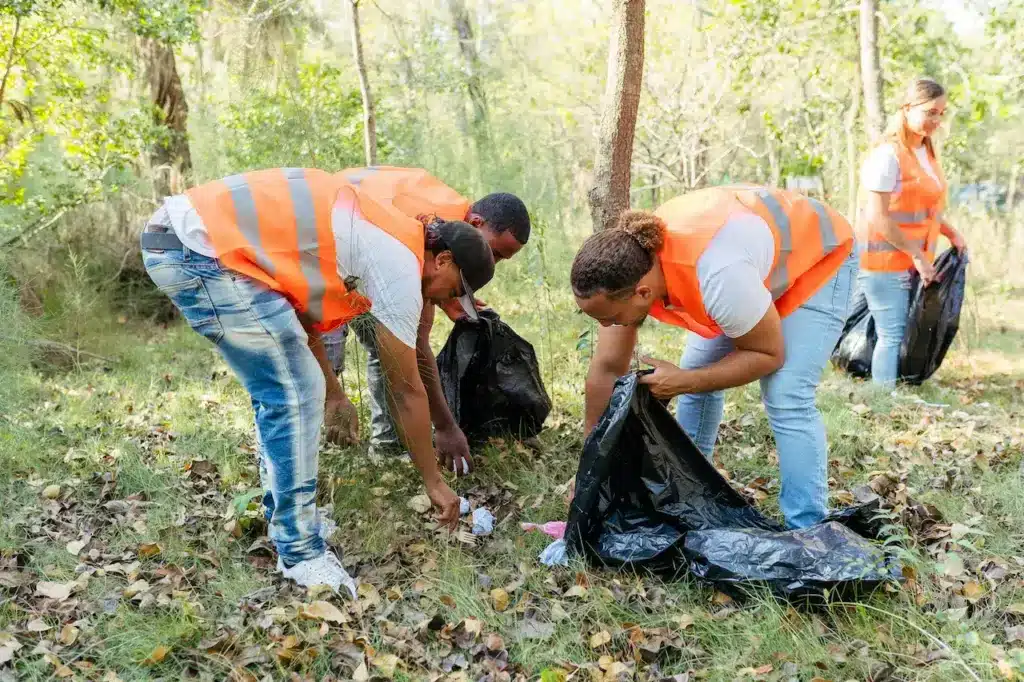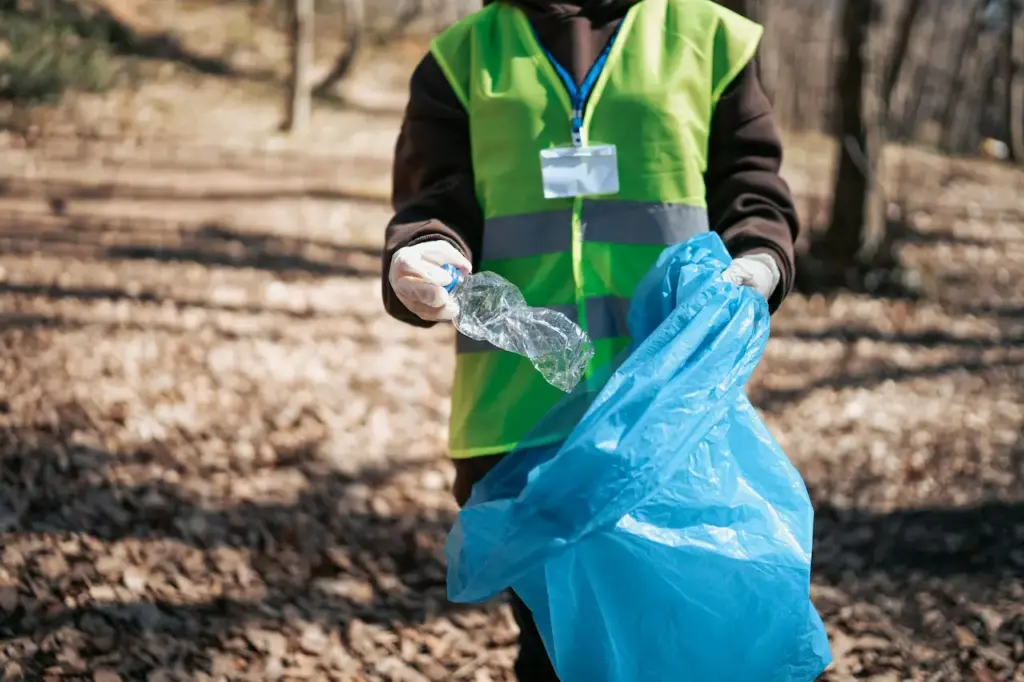Keeping The New Forest Clean
The New Forest National Park lies in the south of England and covers a total area of 219 square miles. It is home to a wide variety of animals, including deer, ponies, pigs, and birds, as well as ancient landscapes and stunning scenery.

However, with around 15 million visitors each year, it is important to ensure that the park remains clean and free from litter. In this article, we will explore ways in which we can all help to keep this beautiful part of the country tidy.
Why Littering Is A Problem?
Litter not only spoils the natural beauty of The New Forest but also presents hazards for both wildlife and people. For example:
- Animals such as ponies may ingest items such as plastic bags or bottles, which can cause serious harm.
- Broken glass can injure both animals’ hooves or paws – making it difficult for them to move around freely.
- People could sustain injuries from sharp objects like needles left carelessly on paths or campsites.
- Rubbish attracts vermin such as rats who feast on discarded food scraps leading to their increased numbers.
- Increased waste management resulting from excessive litter disposal costs is passed onto taxpayers.
In short, litter harms our environment, threatens the animal Kingdom/biodiversity & poses risks to human safety.
How We Can All Help To Keep The Area Tidy?
Keeping the New Forest National Park clean is something that everyone can contribute to. Below are some practical ways in which we all can help to keep the area tidy.
Carry Your Own Trash
Whenever we visit a national park, it is essential that we always pack up what we bring and never leave any form of waste behind when departing from picnic spots or campsites within the boundaries of the New forest park.
Such actions reduce litter accumulation around picturesque areas hence contributing towards keeping such tourist attraction sites inviting for locals and people who may seldom get an opportunity to enjoy nature.
Use Bins Wisely
In many places within The New Forest, bins/trash cans can be seen clearly marked & placed strategically at designated locations, especially along popular routes for tourists. It’s important, however, to avoid overcrowding them by using them aptly with necessary precautions while protecting surrounding habitats.
Clogging rivers/lakesides with unwanted objects such as plastic bottles poses serious environmental detriments; however, larger object-cleaning activities are managed by local authorities.
Join Litter-Picking Groups
An effective way towards preserving natural beauty includes litter pick events organized regularly across various parts of The new forest arranged through charities/groups here that invite willing volunteers keen about making a significant presence in preserving litter-free parks.
The group days consist of structured cleanup operations led by like-minded people as waves scour river banks & wide areas for signs of rubbish. In addition, social distancing measures have made access possible despite restrictions over big gatherings.
These collective efforts give one an edge toward meeting enthusiastic, passionate individuals, especially because these groups play crucial roles in educating fellow participants on how much trash ends up dumped illegally just adjacent to the most prestigious habitat ranges.
Stop roadside dumping – there are frequently well-signed outskirt roads leading into the Forest, offering drivers concerned spaces strictly designed for stopping.
Therefore taking advantage of this affords visitors opportunities to dispose of their garbage bags, securing very bin spaces set out nearby commuting troughs, i.e., A35/A31.
Educate Friends/Family
Even those who don’t live close enough to visit/relocate can still contribute towards keeping the forest beautiful.
It’s important, therefore, to share knowledge and awareness on how visitors impact biodiversity through carelessly dumping waste.
Hence producing educational materials for friends and loved ones contributes largely towards nurturing responsible park practices, especially this is imperative in encouraging collective responsibility.
Implementing Eco-Friendly Solutions
Travel arrangements deployed play a major role in maintaining the ecological balance of New Forest National Park. A high volume of carbon footprint emitted by overcrowded parks during peak seasons cannot be overlooked; hence, reducing such impacts is a critical measure that needs to be adopted.
Utilizing eco-friendly solutions enables visitors to enjoy scenic routes while preserving nature in the long run.
These measures encapsulate carpooling and bicycling for short distances as well as making use of independent transport services like electric cars/pooling services or hiking trails within The New Forest National Park (charge electric vehicles with clean energy).
Such initiatives help reduce carbon emissions when traveling around/this reduces air pollution and ensures forest environments are preserved for generations ahead.
Leave No Trace Policy
The Leave No Trace approach is all about ensuring people don’t leave waste behind and remain dedicated to securing tracks used at all times.
Such efforts prevent litter accumulation which can result in unwanted stress on fragile habitats near popular tourist destinations.
The information available online explains how this system operates, which includes packing everything you brought/cleaning up afterward alongside leaving landscapes unchanged, i.e., avoid building fire-pits outside designated & approved locations.
This helps prepare one prior to embarking on any trips enhancing awareness about responsible camping from conception till after departure.
Waste management, including the elimination of harmful chemical products, should not be discarded carelessly; instead, they have their respective receptacles managed professionally.

Encouraging Children’s Awareness
It’s vital that youth, the future generation, understand the importance of maintaining an eco-system environment healthy enough for both animal species and humans.
High-engaging activities implemented within educational outlets supplemented with visual aids especially will aid comprehension.
Teacher-parent aid interventions promoting sensitivity via exhibitions/classroom curriculums together offer young learners instill ecological/environmental values ranging from how long harmful chemicals last in ecosystems, tips on recycling & discouraging behaviors detrimental towards natural wildlife.
Educating children at an early age provides a knowledge base useful later, thus contributing towards sustaining preservation procedures over time.
What Can Be Done To Reduce Litter In The First Place?
Encouraging responsible behavior through campaigns like Clean-up Days is obviously very important from an educational sense.
However, for most impacting results, it goes beyond pick-up days since regular maintenance ends up being costly both financially and structurally. Below are some ongoing measures that hold everyone accountable:
Installation Of More Bins
The increasingly accessible mechanism within popular areas creates greater opportunities/options to maintain cleaner surroundings, i.e., more bins placed strategically around high-use spots such as picnic sites, trails, campsites, etc., making disposing of waste evidently easier, thus significantly minimizing litter accumulation.
Residents living in the vicinity have been put on notice to be cautious regarding hard-to-reach areas alongside lakesides as there are plans underway to install more eco containers here too.
Educational Campaigns
Raising awareness amongst residents & tourists about hazards posed by litter goes a long way.
This includes working closely with school-aged youth utilizing education programs targeting growing concerns over environmental conservation and ecological benefits, together with engaging community representatives regarding responsible litter disposal.
Regularly circulating notices of local park policies help remind people, as they enjoy nature, to keep it clean.
Implement fines
Some local authorities have introduced stiffer penalties regarding all illegal dumping and littering activities within the park’s restricted areas.
This translates into deterrents that help enforce more responsible individual behavior when disposing of waste, especially because of frequent checks carried out by rangers/officials who will fine individuals encountered non-compliant.
Encouraging Eco-Friendly Alternatives
Encouraging people to adopt environmentally friendly practices also helps in reducing litter within the park. For instance, promoting carpooling as opposed to individual driving, such effort significantly reduces carbon emissions while encompassing communal engagement.
Bus services could also have a dedicated ferry cycle or patron luggage option for bike riders/displaying responsible use of public transit options. This not only limits the build-up of litter within the park but also reduces noise pollution and other forms of pollution that could harm the natural beauty there.
Incentivizing Participation
Incentivizing participation in eco-friendly activities such as recycling and litter pick-ups can also help reduce litter within the New Forest National Park.
For example, local authorities can offer rewards or discounts to visitors who pick up a certain amount of litter in designated areas or participate in programs aimed at educating people on waste management.
Promoting awareness through social media channels/communities serves to create buzz about green incentives recently implemented, thus encouraging more people to take part as shared experiences/stories foster collective responsibility towards preservation efforts thereafter.
Advancing technologies also have yielded progressive outcomes, including digital platforms which promote increased knowledge sharing targeted towards changing attitudes regarding disposal.
Youthful audiences and sustainability markets, particularly prompted by rapid technological advancements, have provided a convenient medium via applications, therefore extending such improvements directed at communal impact enhancing mode of communication alongside outreach techniques that positively influence behavior long-term.

Conclusion
Preserving the beauty and ecological balance of The New Forest National Park is everyone’s responsibility.
Taking practical steps to reduce litter and promote eco-friendly practices such as recycling and proper waste disposal helps maintain this unique part of the world.
As highlighted in this article, educational campaigns aimed at changing community perceptions towards responsible waste management plays a crucial role alongside incentivizing participation, which also helps in reducing litter within the park.
Moreover, an aspect that cannot be overemphasized concerns increased budgetary allocation towards waste disposal mechanisms centered around providing more bins/trash cans across high-traffic areas, ensuring one can dispose of trashes effectively.
Thus on-time clearing notices should be provided for effective communication.
It’s vital to acknowledge cutting down on carbon footprint by adopting ecologically friendly alternatives whilst advocating for a safer future. Therefore, let us all play our part in ensuring The New Forest National Park remains pristine, beautiful, and protected for future generations to come.




